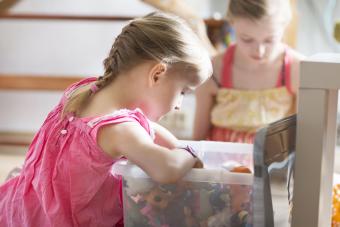
Brainstorming is a way to generate ideas for all kinds of assignments and projects in any subject from art to history. Set the ground rules before you start any of these creative brainstorming activities so it doesn't turn into total chaos.
Discovery Dance
Kids ages four to eight can get their minds fired up with an educational dance that gets them energized and people watching. The two-minute, lively song gives kids information on how to brainstorm and why it's important.
What You Need
- Song Brainstorming by the Imagination Movers
- Pencil and paper
- Large space
Directions
- Play the song and encourage kids to move around the room.
- As they dance, kids should think about ideas and stop to write them down if needed.
- Watching the dance moves of peers in a group setting might also spark ideas.
Collective Cheat Sheet
Kids who are able to write well on their own, like those ages six and up, can participate in this activity with a partner or any size group.
What You Need
- One sheet of lined paper
- Pencil
- Timer
Directions
- Write the task or topic at the top of a sheet of lined paper.
- Set a timer for a time that includes at least one minute per child.
- The first child writes an idea on the paper then passes it to their left.
- Each successive child writes one idea then passes the paper.
- Make copies of the idea list so each child can use it.
Rapid-Fire Questions
Put older kids ages eight to ten in the hot seat when you fire away with questions that can spark ideas. If you are working on a book report, ask questions related to the plot, characters, setting, or themes then kids can choose a report topic from their list of answers. For example, if the book is The BFG by Roald Dahl you might ask, "Who is your favorite character?" or "Have you ever been as brave as Sophie?"
What You Need
- One sheet of lined paper per child
- Pencil
- List of question words: who, what, where, when, why, how, which, whose, are, do, have, can
Directions
- Each child writes basic question words, one per line, along with the left side of a sheet of paper.
- On "Go" shout out a question that starts with each word on their paper and they write down the first answer that comes to mind.
- Only give a few seconds between questions to write their answers.
Brainstorm Timeline
Using logic and sticky notes kids who are able to write on their own can create a brainstorm timeline.
What You Need
- One stack of sticky notes per child
- Pencil
- Long table or board such as a classroom dry erase board
Directions
- While thinking of the topic, kids write one step per sticky note in a process associated with that topic. If you were working on a persuasive essay about why pizza should be served more in the cafeteria, write the steps it takes for an item to get on the lunch menu.
- Write the steps in any order.
- Arrange the sticky notes into a logical timeline.
Mad Grab
This high-energy activity is best for individual brainstorming sessions for kids ages seven and older. The object is to gather as many items as possible. When time is up, kids should look through their items and think about why they chose each one to generate creative ideas.
What You Need
- One piece of paper
- Pencil
- Timer
- Optional: objects to add to the room like books, magazines, newspapers, toys, games, photos, artwork, keepsakes, apparel, pantry goods
Directions
- Write the topic in large print on a piece of paper and put it on the floor in the center of the room.
- Start a timer for one or two minutes.
- When time starts kids run around the room grabbing objects that have related words, images, or uses to their topic.
- Kids place each item on the paper in the center of the room.

Easy Brainstorming Activities
There are plenty of standard brainstorming techniques and activities that work well for different kinds of learners.
- Concept Mapping involves writing the main idea or topic inside a large circle on a page then adding smaller circles around it to hold ideas.
- Writing a list of ideas as you think of them is the simplest form of brainstorming.
- Kids who are more visual can draw pictures of their topic to gather ideas.
- Free writing is a low-pressure way for kids to brainstorm that involves simply writing down everything that comes to mind.
Turn On Your Creativity
Participating in activities that open your mind helps kids choose a topic or point of focus for educational and creative tasks. When the brainstorming activity is done, kids can look at all the ideas then choose the one that's best for the specific assignment.







